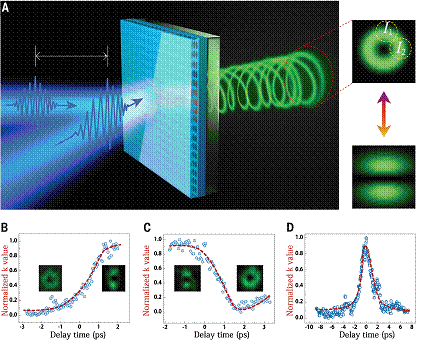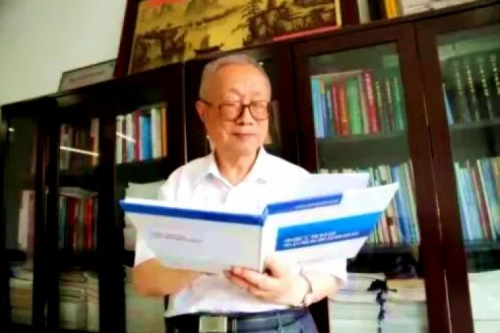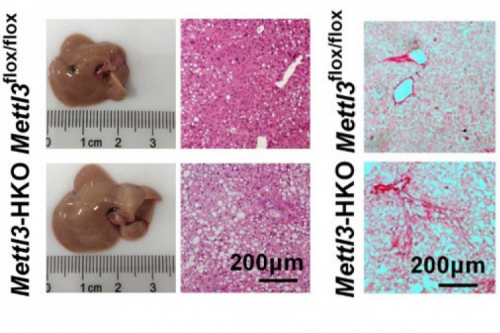Recently, the new principle of all-optical switch proposed by the research team of Professor Song Qinghai of Harbin Institute of Technology, Shenzhen is expected to break the trade-off between ultra-short switching time and ultralow energy consumption. Related research was published in Science on February 28, 2020 under the title of "Ultrafast control of vortex microlasers".
All-optical switch is the fundamental building block of optical communications, optical computing, as well as quantum information. An innovative approach utilizing the far field characteristics of topologically protected bounded states in the continuum is able to break the long-standing trade-off between ultrashort switching time and ultralow energy consumption. The advance could lead to an efficient ultrafast all-optical switch, and eventually revolutionize the all-optical computing.
All-optical switch is a kind of device that controls light by light, which is the fundamental building block of modern optical communications and information processing. Creating an efficient, ultrafast, and compact all-optical switch has been recognized as the key step for the developments of next-generation optical and quantum computing. In principle, photons don’t interact one another directly in the low power linear regime, and a cavity is usually needed to resonantly enhance the field of control light and increase the interaction. In early works, the performances of all-optical switches have been improved rapidly by optimizing resonators such as microrings or photonic crystals. For further improvements, the research area reaches the limit — the trade-off between ultralow energy consumption and ultrashort switching time.
“Low energy consumption usually requires high Q factor of resonator, whereas the longer lifetime high-Q mode imposes an obstacle for improving the switching speed,” said Qinghai Song from Harbin Institute of Technology, China. “An alternative approach with plasmonic nanostructure has been recently exploited to break the trade-off. The inserting and propagating loss is as large as 19 dB and additional power consumption is required to amplify the signals.”
The lasing actions at the topologically protected bounded states in the continuum has the potential to eventually solve this long-standing challenge. In Science, researchers from Harbin Institute of Technology, Australian National University and City University of New York detail their innovation of the switching mechanism at the topologically protected bounded states in the continuum (BICs), which offers an ultrafast transition of microlaser emission from a radially polarized donut beam to linearly polarized lobes and vice versa. The extremely high Q factor of the BICs can dramatically reduce the laser threshold and eventually break the above trade-off in conventional all-optical switches.
Next step of this research is to cascadedly integrate several such switchable microlasers with an integrated photonic chip and to perform optical logic operations. This is the prerequisite for the ultimate goal — the optical computing or quantum computing.
The first author of this paper is Huang Can, a PhD student of Harbin Institute of Technology, Shenzhen, and the first completion organisation is Harbin Institute of Technology, Shenzhen. It was collaborately completed by Harbin Institute of Technology, City University of New York, and the Australian National University. Corresponding authors are Professor Song Qinghai, Professor Yuri Kivshar and Professor Ge Li. This research was supported by the National Natural Science Foundation of China, the Ministry of Science and Technology, the Shenzhen Municipal Science and Technology Commission, the State Key Laboratory of Tunable Laser Technology, the Key Laboratory of Micro-Nano Optoelectronic Information System Theory and Technology, the Ministry of Industry and Information Technology, and the Extreme Optics Cooperative Innovation Center.

Figure 1: Ultrafast control of the quasi-BIC microlasers. (A) Schematic of two-beam pumping experiment. Two beams are spatially detuned with a distance d < 2R, being shifted temporally with a delay time τ. The insets show the far-field emission patterns from the perovskite metasurface under both symmetric and asymmetric excitations. (B) Transition from a BIC microlaser to a linearly-polarized laser. I1,2 are the intensities at the marked regions in the insert to (A). Insets show the corresponding beam profiles. (C) Reverse process of (B). (D) Transition from a donut beam to two-lobe beam and back within a few picoseconds. Red curves are guiding lines for the calculation of the transition time.




